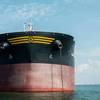CG Comments on Purchasing Authority
On Nov. 6, 2008, Rear Admiral Gary T. Blore, Assistant Commandant for Acquisition & Chief Acquisition Officer, commented on the status of U.S. Coast Guard’s purchasing authority:
“On October 28 we posted a fact sheet (updated on November 4) that explained that DHS had rescinded acquisition [milestone] decision authority from the Coast Guard as recommended by the GAO and required in a recent legislation. I want to further explain this issue, as it may not be clear that this basically codified existing acquisition management practices. We are exercising our major* acquisition processes -- appropriately -- the same way we did before, and after, this law. However, since we had previously adopted the guidance as a ‘best practice,’ we did feel it was important to document our past acquisition process improvements for future continuity.
Previously, the Deepwater projects had a ‘waiver’ that allowed individual project decisions at key program acquisition milestones to be made by the component (Coast Guard) rather than at the departmental level. DHS retained oversight of Deepwater at the system level with periodic briefings and communications. This ‘waiver’ or delegation of authority was done when the Coast Guard was still in the Department of Transportation, recognizing that the Coast Guard had established policies and processes for acquisition management, and as an expediency for the system-of-systems nature of the original Deepwater concept. The waiver allowed Deepwater projects (approximately 15) to be approved by the department at the systems level, and then executed over the life of the contract (25 years) at the component, or Coast Guard, level. The Coast Guard operated under this delegation of authority for Deepwater projects for a period of time, while all of the Coast Guard’s non-Deepwater major acquisitions were managed in accordance with the existing (now DHS) acquisition oversight processes, along with the other 21 components within DHS.
As the newly formed DHS developed their acquisition oversight capacity and the Coast Guard re-invigorated its organic acquisition workforce and acquisition processes, the Coast Guard and DHS decided it was beneficial to have major decisions on all large acquisition projects consistently reviewed outside the component, by DHS, as is done for all other DHS components. Simultaneously, our Commandant, Admiral Thad Allen, directed significant acquisition reforms during the summer of 2006, and the importance of DHS oversight in providing independent review was recognized. Additionally, this was a best practice in place in most of our sister military agencies. With GAO and Congressional encouragement, we began the process of ‘converting’ the former Deepwater project documentation and integrated master plans to accommodate DHS review at milestone decision points. We have been operating this way for most of the last year.
For those less familiar with ‘milestone decisions’ as practiced in major acquisitions, this is similar to DoD processes, where a project reaches significant decision points in which recommendations are briefed up through their services to the Department of Defense for final approval.
DHS is similar. For DHS, these decision points are: (1) Milestone 1, authority to start the project based on an approved need to close a mission capability gap; (2) Milestone 2, approval of the best alternative, based on a business case analysis; and, (3) Milestone 3, approval to start production. Multiple steps between these major milestones are still internal to the component, as explained in detail in the Coast Guard Major Systems Acquisition Manual (our equivalent of the DoD 5000 Series). Other than increasing the size of the Coast Guard acquisition workforce, nothing in the legislation affected where those acquisition employees work in the Coast Guard, which directorate they report to, or the contracting activities and authorities of the Coast Guard.
In summary, the legislation, and implementing directive from DHS, documented and codified a best practice in major acquisition programs used commonly throughout government; one which had been in practice in the Coast Guard for most of the last year.”
*DHS defines major acquisitions at the threshold of $300,000,000 or more over the lifecycle of the project.
(Source: U.S. Coast Guard)















